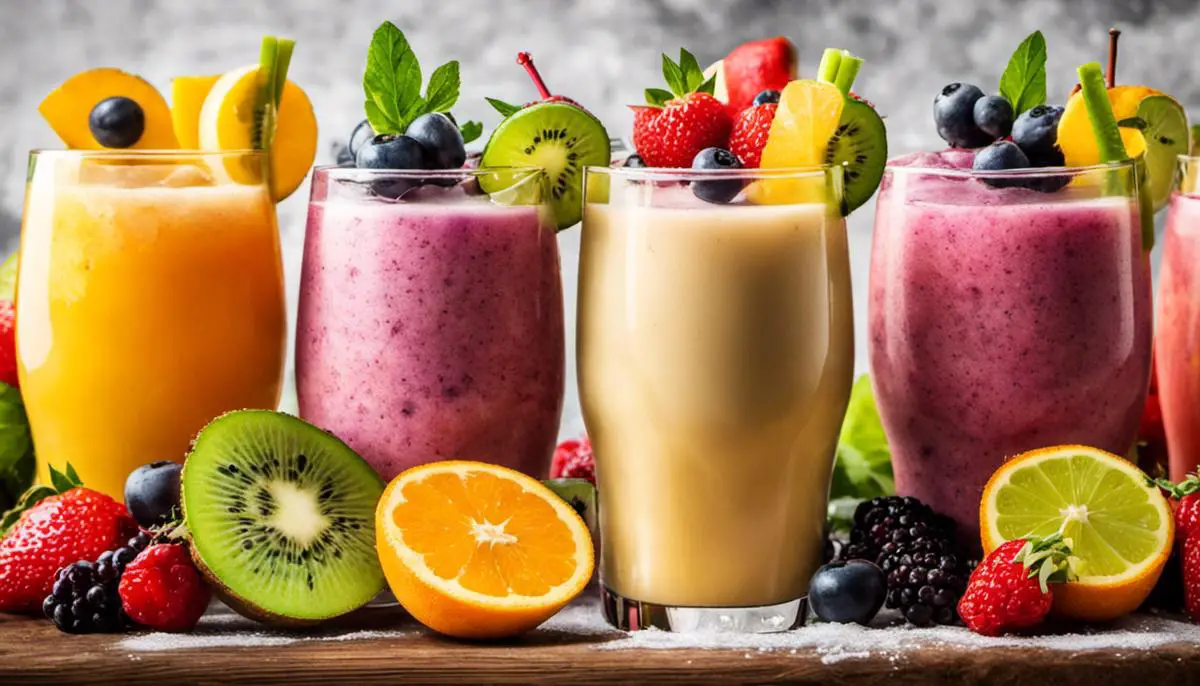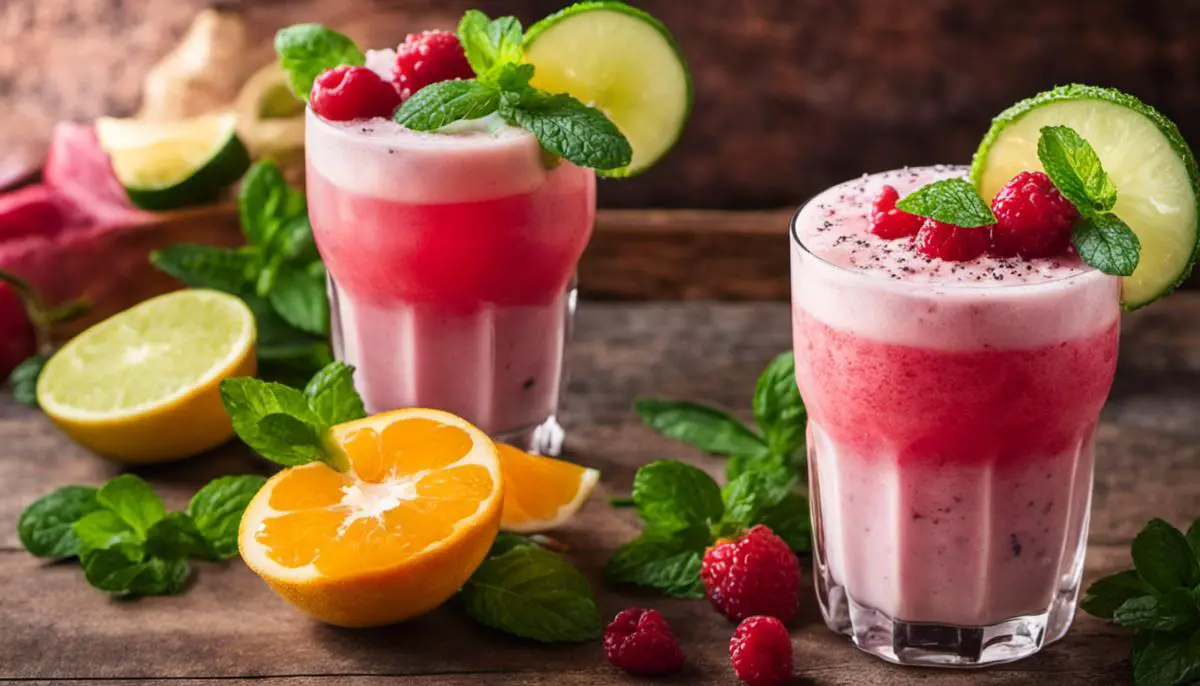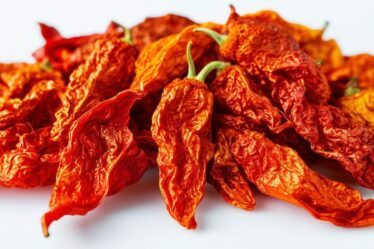
In the heart of Latin American culture, there resides a beautiful sensory delight known as the Licuado. Not just a mere refreshment, a Licuado is indeed a manifestation of rich tradition and culinary expertise. The allure of this simple yet versatile beverage transcends borders and cultures, making it a global sensation. In essence, a Licuado is more than just a smoothie; it’s an experience that captures the warmth and vitality of Latin America. This engaging journey will help us explore the historical roots, deciphering the excellent balance of the perfect Licuado, the creativity it permits in terms of recipes, and finally, understand how it has swayed world cuisines.
Understanding Licuado: Its Origin and Significance
In the beautiful complexity of Latin American cuisine, there’s a hidden gem that encompasses the vivaciousness, the zest, the very spirit of this food culture—Licuado. Oh yes, if you’re a fanatic of texture and taste, a devotee of everything cooking and food in general, you absolutely must try licuado. This concoction, a whirlwind of flavors and textures, is surprisingly straightforward, utterly satisfying, and quintessential to Latin America.
Originating from the Spanish verb ‘licuar’ (to blend), the licuado is a blended beverage bursting with fruits, and sometimes even vegetables. It is often likened to smoothies, but a licuado, my dear food explorers, is so much more. It’s an experience, an adventure, a mouthwatering journey that will whisk you directly to sun-soaked markets and squares dotted across Latin America.
Now, let’s begin to uncover more about this remarkable potion.
Picture a typical licuado – a generous blend of ripe, succulent fruit and a liquid, usually milk or juice, deliciously reduced to a smooth, almost creamy consistency. Now, imagine sipping this sensation under a bright, azure sky, with the laughter of friends providing the perfect background melody. Yes, that’s the true licuado experience.
There are myriad ways to prepare this treat, each recipe as diverse as Latin America’s vibrant cultures. In Mexico, you might come across a thick, velvety licuado de platano, or banana licuado, sweetened with a dash of cinnamon. Further south in Argentina, the Manzana (apple) licuado rules the roost, bringing a sharp yet refreshingly sweet palate pleaser.
Licuado is indeed adaptable and adventurous, just like culinary explorers. It’s a splendid testament to the cuisine’s flexibility and readiness to incorporate the season’s best offerings. A mango in summer? A licuado de mango might be just the ticket. The juicy pear harvested in the heart of fall? Yes, a pear licuado is an orchestra of taste waiting to be conducted.
Embracing these beautiful drinks is to understand their central role in Latin American cuisine. Licuados are not just about satisfying the palate, but are imbued with life and vitality. They sit at the axis of the Latin dining experience—a continent-wide broken bread, an affirmation of unity through food. They are enjoyed in homes, on the streets, and in little eateries dotting Latin America’s landscapes, and are an undeniable testament to the region’s culinary tradition, lifestyle, and zest for life.
Whether it’s a weekday family dinner, a get-together with friends, or a quiet afternoon with a book, licuados are the lifeblood of Latin America. They’re a food memory to be shared with loved ones, a bonds’ brew, an embodiment of the region’s warmth, and above all, a celebration of Latin American culinary prowess. Enjoying a licuado goes beyond nourishing the body. It feeds the soul. So the next time you find yourself craving an authentic taste adventure, transport your taste buds to Latin America, and savor a delicious licuado.

The Anatomy of a Perfect Licuado
Imagine the joy of savoring a perfect licuado. The one, which at the first sip, escorts your taste buds to an exotic Latin American beach. Now, wonder, what is it that makes this licuado stand out from the run of the mill? Is it the quality of the fruits or the perfect balance between sweetness and freshness? Let’s not just settle for good, but delve into what makes a licuado truly great!
Blindfold a culinary enthusiast; let them take a sip of a good licuado, then a great one. What elements awaken their senses more with the latter is nothing short of an art form, starting with ingredient selection. A great licuado demands not just any fruit, but the ripest, freshest, and most vibrant choices. The pineapple glistening under the sun, the ripe banana exuding its sweet perfume, or the freshly-picked strawberries with a hue of red that rivals a beautiful sunset; these are the building blocks of an exceptional licuado.
What’s more? The art of carefully harmonizing these flavors. A commendable licuado delivers a medley of flavors, but a great one carries you on a taste journey, a narrative woven by contrasting and complementing flavors. For instance, consider the tropical dance between the tartness of passionfruit and the creaminess of avocado or the exciting duet of sweet mango swirled with the exciting undertone of chili.
Balance, indeed, isn’t just restricted to taste but also texture. Beyond the delightful burst of fruit flavors, a licuado’s texture should be an experience in itself. It’s an act of suspending fine fruit pulp in a luscious, creamy base, creating a delicate balance between being light yet satisfying.
A notable aspect that should never be overlooked in this gastronomic panorama is temperature. Serving a licuado at just the right degree of frostiness ensures that the flavors are optimally showcased, with the cold soothing the palate and intensifying the taste of the fresh tropical fruits.
What sets a great licuado apart is also its aesthetic appeal. The pouring of it into a tall glass, observing a cascade of colors weaving a visual tapestry. A great licuado catches the eyes before it even meets the lips.
Finally, a noble licuado signature strength lies in its healthful properties. Every sip should offer a power-packed dose of vitamins, antioxidants, and minerals. More than a delicious treat, the ultimate licuado is a testament to wholesome nourishment.
So, don’t simply quench your thirst with a licuado – embark on an enchanting quest for that extraordinary blend. Convince your palate that a licuado can be more than just good – it can be extraordinarily delectable, a true reflection of Latin America’s rich edible heritage. Happy blending, and here’s to redefining the boundaries of licuado greatness!

The Versatility of Licuado: Diverse Recipes and Innovations
Passionate food lovers and adventurous chefs revel in the ability to take a traditional dish and innovate it with playful twists, creating exciting, flavor-filled experiences. Licuados, the beloved Latin American fruit blender beverage, is especially begging for culinary experimentation. An exploration beyond the typical fruits and dairy base offers a realm of intriguing possibilities for elevating this traditional beverage.
Delving into the world of exotic fruits can add a surprising new edge to the standard licuado recipe. Dragon fruit, with its bright pink hue and subtle sweetness, can offer a visually attractive and refreshing taste. Rambutan, another tropical delight, can provide a delicate floral note. Using fruits unheard of in standard recipes can result in electrifying changes to both the color palette and the flavor profile.
Switching up the dairy base offers infinite possibilities. Swapping the traditional milk with coconut milk not only adds a tropical twist but also caters to the vegan audience. Almond milk brings in a nutty flavor, while oat milk could contribute to the thickness and subtly sweet undertone. Even adventurous choices like goat milk could add an earthy nuance. Experimenting with bases can revolutionize the licuado’s texture and nutritional content.
Additives shouldn’t be undervalued either. Incorporating ‘superfood’ ingredients such as spirulina, chia seeds, or flax seeds could instantly ramp up the health quotient of a licuado. Using spices like cinnamon, nutmeg, or ginger can create layers of flavor complexity, taking the licuado from a simple refreshment to an invigorating elixir. Adding a touch of heat with jalapeno or chipotle could create a spicy surprise; an unexpected thrill in a sweet drink!
Substituting sweeteners is another innovative route. The use of agave nectar, honey, or stevia instead of white sugar can provide distinct differences in sweetness levels and aftertastes. For those with a sweet tooth, caramel or even chocolate could add a decadent twist to the beverage.
Lastly, let’s not neglect the garnish. A dash of crushed pistachios sprinkled on top, along with some fresh mint leaves, could add an irresistible crunch and a burst of freshness. Even an adventurous dusting of chili powder on a mango licuado could perfectly contrast the sweet and spicy flavors. The garnish becomes the first interaction with the drink. It’s an introduction that promises the exciting flavor journey to follow.
In conclusion, creating a unique licuado that is far from mundane lies in embracing ingredient substitutions and flavor combinations that may initially feel out of the ordinary. To be adventurous is to fuel culinary innovation. This lens can reposition a simple licuado from being a delightful refresher to a gastronomical delight, becoming a testament to the versatility and dynamism nestled within Latin American cuisine. By experimenting with these humble blender beverages, we keep honoring tradition while leaping boldly into new, uncharted territories of taste and texture. Cheers to that adventurous journey—salud!

Licuado in Global Cuisine: Trends and Adaptations
Serving as a testament to its versatility and universal appeal, the beloved Latin American licuado has been enthusiastically received by various worldwide cuisines. Throughout its journey, this rich, luscious beverage has proven itself far more than just a delightful treat or a refreshing way to cool down. Numerous cultures have adopted and adapted licuados, adding a distinct touch, reflecting their gastronomic tradition.
Licensing liberty from the licuado, smoothie bowls have surged in popularity across the American continent. Transformed from a simple drink to a voluminous breakfast bowl, the licuado meets granola, chia seeds, and a vibrant array of toppings in this contemporary adaptation. While the hearty consistency differs from the original lighter texture of a licuado, it stays true to the spirit of using fresh ripe fruits and allowing the flavors to be the star.
Inspired by the traditional licuado, European cultures have created their own versions known as ‘frappés’. The Greek frappé, for instance, is an iced coffee drink made with instant coffee, sugar, and water whipped to a froth. It’s a tour de force of the country’s café culture, much like licuados are to Latin America.
Moving to Asia, one cannot help but draw parallels between licuados and the famed Indian lassi. Although lassi is yogurt-based, there’s a commonality in the blending of fresh ingredients into a chilled, soul-soothing drink. Moreover, the advent of tropical fruit lassis mirrors the diversity of fruits that licuados embrace.
As the world becomes more health-conscious, the licuado has been further elevated in modern, health-oriented diets, with a preference for plant-based milk substitutes like almond, oat, and coconut milk enhancing their nutritive value. The spike in popularity of green licuados, incorporating vegetables like spinach or kale, resonates with this global trend.
Despite traversing borders, the soul of the licuado remains untouched: it’s a potpourri of blended fresh fruits, a flexibly brilliant concoction embodying the very spirit of gustatory adventurism. Its generosity to accommodate endless flavor adaptations makes it not just a drink, but a celebration of multicultural culinary heritage and innovation—an edible, drinkable form of art that brings everyone together around the dining table. Or in this case, the blender!
So next time you’re up for a kitchen experiment, why not concoct your own version of a licuado? Give it an Irish spin with a scoop of vanilla protein powder, or go Japanese with a hint of matcha. Food, indeed, is a shared language—a delicious testament to our shared humanity, and licuados have certainly become an integral articulation of this global narrative. Ready, set, blend!

Embarking on this fascinating journey into the realm of Licuado has not only enlightened about its rich past but also about its incredible versatility. It has been a testament to how a simple combination of fruits with the right balance of sweetness can become an international sensation reflecting genuine Latin American essence. The Licuado is undeniably a testament to the power of food and drink as a unifying language, a conduit for fostering shared experiences, and forging cultural understanding. As it continues to throb in the heart of Latin kitchens, it is also beautifully reshaping the global culinary scene – winning hearts one sip at a time.



